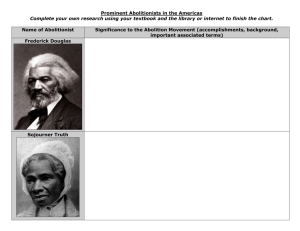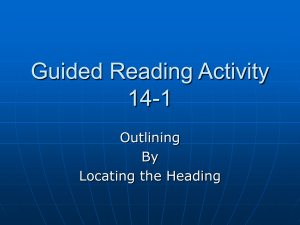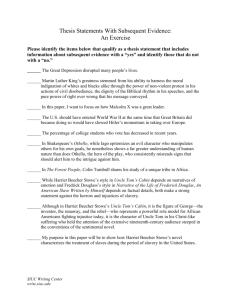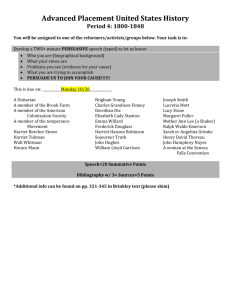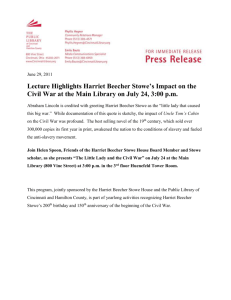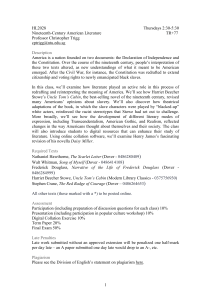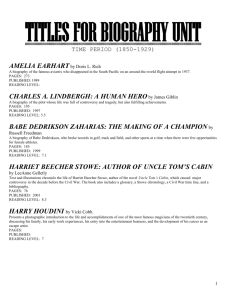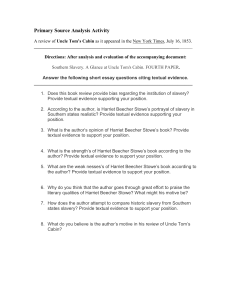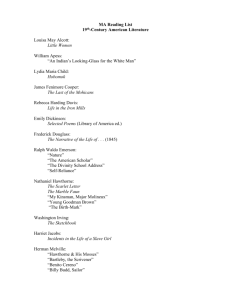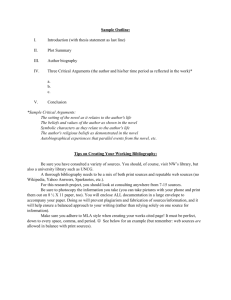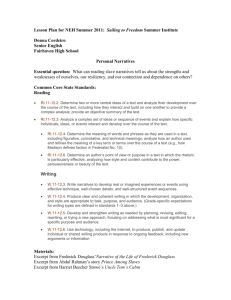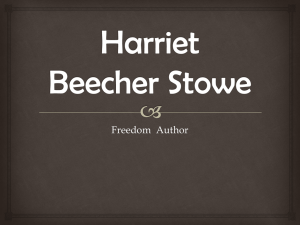erinnes powerpoint - Pittsfield Public Schools
advertisement
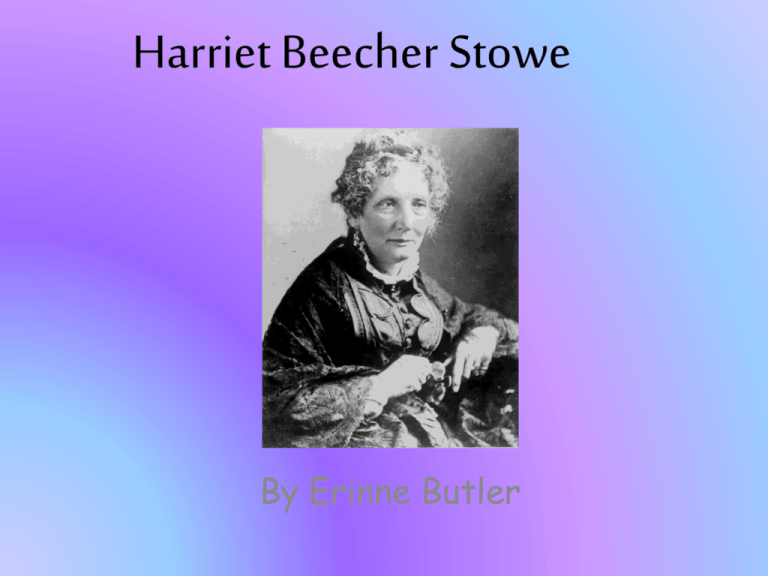
Harriet Beecher Stowe By Erinne Butler • • • • • Harriet Elisabeth Beecher Born: June 14, 1811 (Litchfield, Connecticut) Died: July 1, 1896 (Hartford, Connecticut) Daughter to: Lyman and Roxana Beecher Sisters: Catharine, Mary and half-sister Isabella Brothers: William, Edward, George, Henry Ward, Charles and half-brothers Thomas and James Early Years • Harriet was the seventh and youngest child of Lyman and Roxana • Her name was given to her in honor of her aunt Harriet Foote, who deeply influenced her thinking, especially about culture. • Her uncle Samuel Foote encouraged her to read the works of Lord Byron and Sir Walter Scott • At the age of forty-one Roxana died of tuberculosis , at the time Harriet was just four • Two years later a step-mother assumed the role of mother in the household Education and Career Beginning • When Harriet was eleven she was sent to the seminary, or a private school for young women, that was kept by her older sister Catharine in Hartford, Connecticut • There she learned advanced curriculums of languages, natural and mechanical sciences, ethics, mathematics and other subjects generally only taught to young men • Four years later she was employed as an assistant teacher • Together she and Catharine founded the Western Female Institute and began her writing career by writing a children’s geography book with her sister Her Family • She married to Calvin Ellis Stowe, professor at her father’s theological seminary and a widower to her friend, in 1836 • The first fourteen years of marriage were spent in poverty, and during that time they had seven children • Then in 1850 Calvin was offered a professorship at Bowdoin therefore moving to Maine in the process. • Calvin Stowe died 1886 and Harriet’s mental faculties failed two years later in 1888 and then she died in 1896 at the age of eightyfive. Some of Her Works of Literature • Her first book was The Mayflower which she published in 1843 • She became a frequent writer to the Western Monthly Magazine after she won a prize contest in 1834 • Lady Byrin vindicated (1870) was the novel in which she accuses Lord Byron of having incestuous relations with his half-sister. Doing so she suffered greatly after the British opinion turned against her. • Her last novel was Poganuc people in 1878, which partly reminiscences on her husbands childhood Uncle Tom’s Cabin • She was inspired to write her most famous novel after she had come into contact with fugitive slaves during her time in Cincinnati, learned about how cruel life in the South was and how the slaves were treated. Also she had noticed the Fugitive Slave Law, which stated that it was illegal to house escapes slaves • Finally, after the death of her infant son Samuel to Cholera she wrote one of the most famous pieces of literature in the 19th century in 18511852 Uncle tom’s Cabin continued… • It was first published in the anti-slavery newspaper The National Era from June 1851 to April 1852 • Then later on it was published in book form • The book itself was based on the true life and times of Josiah Henson • The book was smuggled into Russia in Yiddish so it would pass through censors unnoticed. • The play was translated into thirty-seven languages and sold five and a half million copies • After the civil war the sales of the story declined • Its first film adaptation was made in 1903 and in 1970 the novel’s strong female characters attracted female critic but Tom’s passivity gained no defenders Bibliography • Women in History. Harriet Beecher Stowe biography. Last Updated: 3/9/2010. Lakewood Public Library. Date accessed 4/29/2010 . <http://www.lkwdpl.org/wihohio/stow-har.htm>. • Liukkonen, Petri. "Harriet Beecher-Stowe." www.kirjasto.sci.fi. 2008. Web. 02 May 2010. <http://www.kirjasto.sci.fi/hbstowe.htm>.
